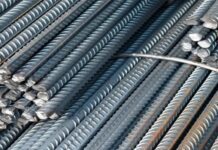India is witnessing a transformative shift in its steel manufacturing sector, driven by green technologies, clean energy integration, and sustainable industrial practices. As part of its broader vision for a low-carbon future, the country is rapidly transitioning towards green steel production, setting the stage for a more eco-conscious and innovation-driven economy.
Traditional Steelmaking and Its Environmental Impact
Conventional steel production methods—reliant on coal and coke—are known for their heavy carbon footprint. These methods contribute significantly to greenhouse gas emissions, air pollution, and depletion of natural resources. With climate change concerns intensifying, it has become essential to rethink how steel is produced and consumed.
Green Steel: Redefining the Future of Manufacturing
India’s journey toward sustainable steel begins with the decarbonization of its industrial base. By adopting alternative energy sources such as green hydrogen, renewable electricity, and innovative furnace technologies, the steel industry is moving away from fossil fuel dependency.
Traditional blast furnaces that melt iron ore using carbon-intensive fuels are gradually being replaced by hydrogen-based direct reduction and electric arc furnaces, both of which offer cleaner, more efficient production methods with drastically lower CO₂ emissions.
Recycling: The Key to Emission-Free Steel
One of the most effective and immediate strategies to reduce carbon emissions in steelmaking is recycling scrap metal. Unlike primary steel production, which consumes large amounts of energy and raw materials, recycled steel requires significantly less energy and emits fewer greenhouse gases. This supports the principles of a circular economy, promoting resource efficiency and waste reduction.
Embracing Clean Technology and Carbon Capture
Despite green advances, residual emissions can still occur. To tackle this, industries are turning to Carbon Capture and Storage (CCS)—a breakthrough technology that traps and stores carbon emissions safely underground, preventing them from entering the atmosphere.
By integrating carbon capture systems, Indian steelmakers are striving to achieve near-zero emission production while aligning with global environmental goals.
The Economic and Global Impact
Adopting green steel practices is not just an environmental decision—it’s a strategic economic move. Global markets are increasingly favoring sustainable supply chains, and India’s pivot towards low-emission steel can boost export potential, create jobs in clean tech, and enhance international competitiveness.
“India’s push for green steel is revolutionary. With demand for sustainable products on the rise, early adopters of these practices will lead the global market,” says a senior industry executive.
Moreover, HR and supply chain consultants emphasize the growing importance of transparency in sustainable practices, highlighting the urgency for industries to shift towards responsible sourcing and production.
Conclusion: Building a Greener Industrial Future
India’s green steel revolution is more than an environmental initiative—it’s the cornerstone of a modern, forward-thinking industrial economy. By combining innovation, recycling, clean energy, and carbon management, the nation is paving the way for a resilient and sustainable future in global manufacturing.





